Eye Safety

Eye Safety
In the construction industry, there is the potential of getting injured and being exposed to hazards daily. Without the proper Personal Protective Equipment (PPE) such as hard hats, safety glasses, and safety boots. It is especially important to ensure that safety glasses are always worn when working in areas with sharp objects or showering debris from all sides. According to The National Institute for Occupational Safety and Health (NIOSH), about 2000 workers sustain an eye-related injury in the workplace every day. It is valuable to understand what an eye injury is, how workers can prevent these injuries, as well as how they can be treated in the event of an injury on-site.
What Is an Eye Injury?
Eye injuries may vary depending on how it occurred, as well as the severity of the injury. In construction, the most common eye injuries that occur are due to flying debris, such as shards of glass or wood, splattered chemicals, and silica dust particles. Eye injuries can also result in a combination of the above hazards although it may vary depending on the jobsite and the stage of development.
How To Prevent Eye Injuries
The most common and safest way to protect yourself from sustaining and eye injury is by wearing PPE, specifically eyewear that meets the Canadian Standards Association (CSA) standards. In addition to having CSA-approved safety glasses, the glasses should also be properly suited to each worker’s head, where they sit comfortably with a hardhat and are snug so that they do not fall off while on-site. All PPE, including hard hats, visibility vest, grade 1 ‘green patch’ safety footwear, and glasses, must all fit workers comfortably for all day protection.
Aside from wearing the appropriate PPE, workplaces can also ensure there are appropriate engineering measures in place to prevent falling debris and other hazardous materials resulting in eye injuries. This may include placement of safety guards in front of the worker when dealing with hazardous materials, or proper ventilation when working with silica or asbestos.
Classes of Protective Eyewear
There are also different types of safety glasses that are designed to prevent different types of work-related injuries, that workers ought to be made aware of. According to the Canadian Center for Occupational Health and Safety (CCOHS), there are 6 different types of protective eyewear, including Face Shields, Googles, and Spectacles. Though each safety glass differs in terms of their material, size, and overall physical characteristics, they are all designed to ensure safety from hazardous materials in one way or another. However, it is necessary to choose the right safety glass to ensure protection from the substance(s) you are presently exposed to.
How To Treat Eye Injuries
In the event of an emergency, workers shall visit their eye wash station onsite and use the equipment as directed. The eye should be rinsed of the hazardous materials and/or debris, immediately after exposure. Depending on the specifications of the equipment, each eye wash station should be equipped with a solution (“flushing fluid”) used to rinse the eye. Workers must consult the Safety Data Sheet (SDS) associated with the hazardous substance they were exposed to in order to ensure they are following the proper protocol and procedures. All workers shall be trained in how to use and inspect each eye wash station, as well as follow all written instructions (as directed on both the eyewash stations and SDS).
Learn More
To learn more about how you can ensure due diligence and protect your workers, contact us at 905-669-5444 or email info@safetyfirstconsulting.ca for more information on our health and safety consulting. Safety First will provide your company with the assistance required to achieve compliance with government health and safety regulations.

